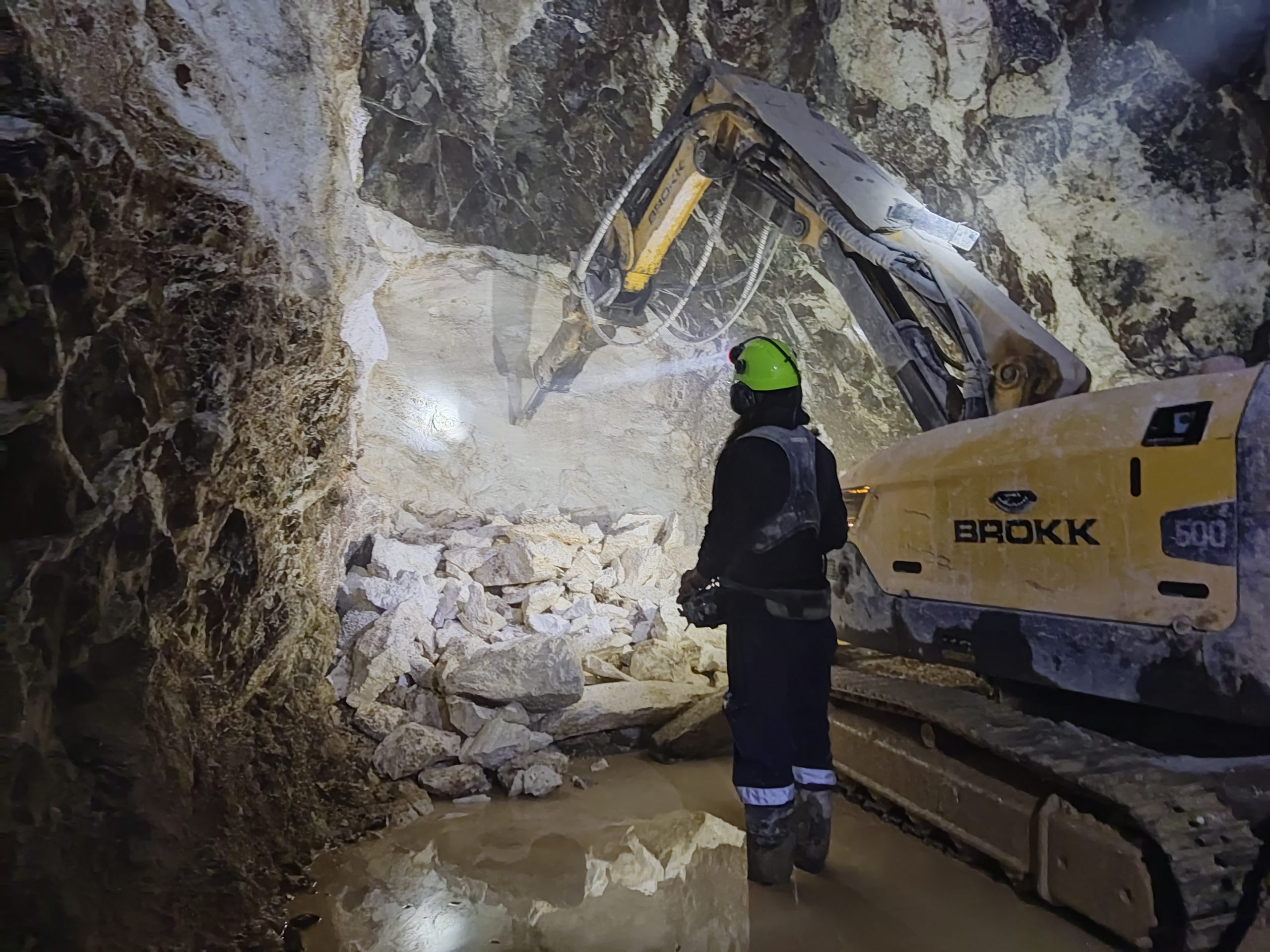By Jeff Keeling, vice-president of sales & marketing, Brokk Inc.
Potash may not be a household term, but it certainly affects every household that buys groceries. Those involved in mining this critical mineral for fertilizer play a major role in helping farmers feed the world. With growing demands for food production, they are continually seeking advanced technology to make mining safer and more efficient.
That’s where remote-controlled demolition robots come in. They are game changing for accessing the deepest, narrowest veins. With a compact, remote-controlled demolition robot, miners can drill, blast, bolt, and break remotely. From deep-vein operations to support tasks such as shaft revitalization, here’s how demolition robots are helping producers all over the world increase safety and efficiency.
Ultra-deep, narrow-vein applications
Safety risks and logistical needs, such as providing air, electricity, and other utilities, increase exponentially the deeper a mine goes. By removing the absolute minimum of rock as they chase after ore-rich veins and concentrated salt layers, producers reduce extraction costs and minimize overburden. However, this leads to tight spaces and difficult working conditions for miners at the face.
Traditional ultra-deep mining methods rely on hours of physical labour in extreme conditions using manual tools such as jacklegs, stoppers, and ad-hoc bar and arms. These tools can weigh upwards of 72 pounds (32.4 kilograms). During operation, miners must maintain close contact with the drill, increasing exposure to falling rock, vibrations, sprained backs, pinched fingers, and noise.
Now, what if there was a system that offered the safety and productivity of remote operation with the flexibility and precision of a jackleg — and more? Underground mines have achieved this by adding demolition robots. These compact machines offer exceptional power-to-weight ratios — often on par with machines three times their size — and significantly outclass even the most advanced jackleg drills. Designed for demanding demolition applications, these machines easily stand up to the heat and pressure of ultra-deep mining, while heavy-duty caterpillar tracks and outriggers allow them to cover even the roughest terrain. An advanced three-part arm provides unrivaled range of motion for drilling, scaling, breaking, and bolting in any direction. The use of hydraulics also eliminates the need for supplying compressed air, which, in turn, minimizes the utility requirement at the face, while electric running guarantees zero-emission operation.
In addition, demolition robots provide versatility that can streamline operations and limit emissions. With the right attachment, operators can move from drilling to breaking to scaling while never getting within 13.1 feet (four metres) of the work surface. Thanks to advances in technology, these machines can also handle much larger attachments than similar-sized equipment, allowing mines to bring powerful tools to new applications without increasing shaft size. It even makes 100 per cent remote drilling and bolting possible since there are several compact demolition robots with ample power to operate carousel attachments.
Stope retrieval operations
The durability and dexterity of demolition robots doesn’t just benefit deep-vein mining operations. Retrieving equipment and materials from stopes has been delegated to demolition robots for some time.
Take a loader retrieval after a rock fall, for example. Some mines have found that demolition robots traverse the uneven ground more quickly than traditional retrieval equipment, and they can break up oversize rock and other obstacles to make extraction easier. The highly maneuverable arm also makes attaching cables through the scoop’s lug more efficient.
Shaft maintenance operations
Opening up shafts or performing shaft maintenance are other areas where remote-controlled demolition equipment can provide more efficiency.
Mining techniques have changed over the years, and for many, operations returning to old veins with more modern equipment can supplement production. However, these shafts are usually found in a very deteriorated state — with large rubble, collapsed supports, and downed utilities — making the process of opening them up slow and dangerous. In addition, safety requirements have advanced along with mining techniques, so revitalizing old shafts can require substantial work to meet modern regulations.
In these types of situations, the versatility of remote-controlled demolition machines can minimize equipment and personnel requirements for highly efficient renovation. Armed with a suite of attachments, a demolition robot can perform almost any required task. These attachments can also make routine shaft maintenance more efficient, allowing mines to maximize productivity for these vital, yet time-consuming and risky operations.
The future of mining
From ultra-deep to potash extractions just below the surface, demolition robots can increase safety and productivity throughout the mine. Modern mining has many exciting challenges in store for the new generation of technologists who will need creative solutions to supply the world’s ever-growing demand for potash.
Working with demolition robot manufacturers to provide mechanized mining and maintenance solutions promises to improve not only current productivity, but ensure a safer, more sustainable future for mining operations. The possibilities are only limited by the imagination.
About Brokk
Brokk has been the world’s leading manufacturer of electric remote-controlled demolition machines and attachments for almost 50 years. Through continuous innovation in engineering and design, Brokk is able to offer unique solutions to multiple industries worldwide, including construction, demolition, mining and tunneling, cement and metal processing, nuclear and other specialty applications.
For more information: Brokk Inc., 17321 TYE Street SE, Suite B, Monroe, WA 98272; 800-621-7856; info@brokkinc.com; www.brokk.com.
—









